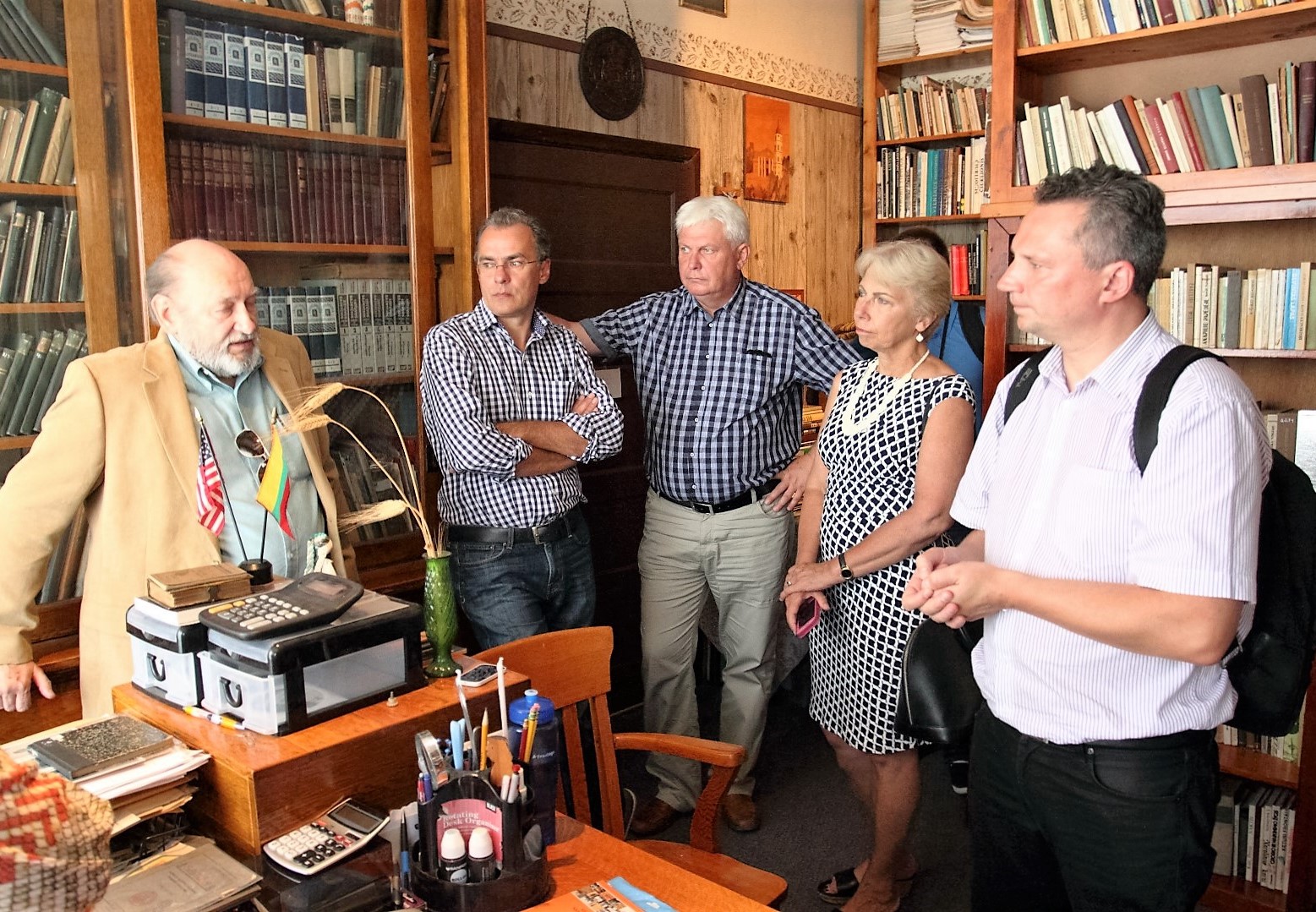Baltimore National Lithuanian Library
The Baltimore Lithuanian National Library (Lietuvių Tautiškas Knygynas) is the oldest functioning Lithuanian ethnic library in the United States. Although the library was officially incorporated on April 6 , 1908, this date commemorates the establishment of a centralized Lithuanian library in Baltimore, formed by the consolidation of existing Lithuanian fraternal organization libraries. The association’s incorporating officers were Kazys Baltrušaitis, Antanas Karalius, K . Widman, Antanas Mandranickis and Antanas Žalnieraitis.
The library consolidation was the idea of Jonas Šliūpas (1861-1944). He had moved to Baltimore to attend medical school and became very active in the city’s ever growing Lithuanian American Community, arguably becoming the most active of the Lithuanian immigrants.
The establishment of fraternal societies
The first Lithuanian fraternal society established in Baltimore was Saint John the Baptist Society (Švento Jono Krikštytojo Draugija). It was formed in 1885 as a religious society whose goal was to establish a Lithuanian American Catholic Church. As the society grew and achieved this objective, its goals broadened to provide for the mutual aid of its members, especially in sickness and death, and to support orphans, according to the decisions of its membership.
Such mutual benefit fraternal organizations functioned very similarly to modern insurance companies and provided an early form of social security to its members. The income earned on the Society’s bank funds and later financial investments were in turn used to foster the economic and social well-being of the community. This included the establishment of a Lithuanian school and a library for the use its members.
Religious vs. secular societies
With the birth of the Lithuanian National Revival Movement in the United States many secular fraternal organizations began to be formed. They often found themselves at odds with the religious societies established earlier, as they both provided similar mutual benefit. The first of these secular fraternal organizations to be formed in Baltimore was the Society of Lithuanian Studies (Lietuvių Mokslo D raugystė) founded by Jonas Šliūpas on September 28, 1891. It advocated the principles of the Lithuanian National Revival Movement and fostered the education of the Lithuanian immigrant, publishing Lithuanian language material, establishing a library, and spreading the knowledge of Lithuanian history and culture.
Other secular organizations were the Nicolaus Copernicus Society (Mikalojus Kopernikas Draugija) established in 1890, the Grand Duke Kęstutis Society (Lietuvos Didžiojo Kunigaikščio Kęstučio Draugija) established in 1898, the Lithuanian King Mindaugas Society (Lietuvos Didžiojo Kunigaikščio Mindaugo Draugija) established in 1906, and the Dr. Vincas Kudirka Society (Dr. Vinco Kudirkos Draugija) and the Simonas Daukantas Society (Simono Daukanto Draugija) established in 1908. Among the many Lithuanian religious organizations formed in Baltimore were the Saint Casimir Society( Švento Kazimiero Draugija), Saint George the Warrior Society (Draugyste Švento Jurgio Karejvio), and the Saint Izidorius Society (Švento Izidoriaus Draugija).
Although these religious and secular societies continued to have many differences, they managed to put them aside and consolidated their libraries for the for the good of the community. They embraced the library and made financial contributions towards its operation. Seven of the largest and most influential organizations assigned representatives to sit on its administrative body.
The Library has a home
From 1908 to 1910, the National Lithuanian Library was housed in the basement of Saint John the Baptist Church located on Paca and Saratoga streets. Surviving records indicated that in 1908 there were 149 library members, while two years later, the number had risen to 268. For the next seven years the library rented space at 112 N. Green Street, but in 1917, the library received an offer to move into free space at 853 Hollins Street. This was one of the newly acquired buildings of the future Baltimore Lithuanian Hall.
The services provided by the Lithuanian National Library were so popular, it was assigned space on the building’s main floor and became one of the fixtures of the Baltimore Lithuanian Hall. The National Lithuanian Library became an integral part of the Lithuanian Hall complex providing information to anyone seeking its services, which it continues to do to the present day.
At the time the library was founded, each user was required to obtain a library card at a cost of twenty-five cents. Books could be checked out for one month and over due books assessed a fine of two cents per day. Visitors were expected to behave quietly and not talk among themselves. Under the provisions of the Baltimore National Lithuanian Library’s 1908 bylaws signed by its president, secretary, and treasurer, the library would provide all Lithuanians the use of Lithuanian books and periodicals of general interest, encompassing all branches of literature, drama, history, music, natural sciences, biography, spiritual writings, sociology, politics, economics and medicine, including textbooks.
The library’s administrative body was made up of two representatives from each of the supporting Baltimore Lithuanian organizations. These individuals were required to have integrity and a love for truth, virtue and enlightenment. They elected the library’s president, secretary, treasurer, two trustees, and a librarian. Funding for the library was solicited from the Lithuanian Home organization and from the profit made from picnics, theatrical presentation, lectures and the like. The funds were used for the maintenance, expansion and improvement of the library. Over time it became commonplace for individuals and societies to donate cash and books in support of the library.
A mountain of newspapers
When the library opened in 1908, visitors could read the current issues of every major Lithuanian newspaper being published, such as Vienybė Lietuvininkų (Lithuanians United), Keleivis(The Traveler), Darbininkų Viltis(Hope of the Working Class), Vilniaus Žinios(Vilnius News), Lietuvių Žinios (Lithuanian News), and Draugija(Society). By 1919 newspaper reading material included Amerikos Lietuvis (The American Lithuanian), Dirva(The Soil), Lietuva (Lithuania), Laisvė (Freedom). In 1920 it added Naujienos (The News), Sandara (Unity), Kardas(The Sword), Draugas (The Friend), and Proletaras(The Proletarian). The library continued to add newspaper selections: in 1921 Artojas (The Plowman), Garsas(The Sound), in 1922 Vanagas(The Hawk); in 1924 Darbininkas(The Worker), Lietuvos Ūkininkas (The Lithuanian Farmer), and Socialdemokratas(The Social democrat). There is no question that Baltimore National Lithuanian Library members were able to receive full information about local, national and world events in their native language. Regrettably space limitations precluded all these newspapers from being archived and preserved. Today the library only has a complete set of Draugija for the year 1909 and partial sets for 1910-1912.
A library for everyone
It should be noted that the library never showed any bias in the reading materials it offered its pat rons. All political points of view were represented. Surviving records from the 1919–24 period clearly show that the organizations supporting the library not only included the Lithuanian Republican and Lithuanian Democratic Clubs, but the Lithuanian Workers’ Literary Society (Lietuvių Darbininkų Literatūros Draugija) and the Lithuanian Women’s Progressive Union of America (Lietuvių Moterų Pažangaus Susivienijimo Amerikoje), all of which were socialist if not communist in their political leanings. Regardless of a member or organization’s political leanings, the library was open to all. In 1921 the Lithuanian American Dove Society donated four shares of the Lithuanian House Association shareholder stock to the Library, valued at $100, to insure the financial well-being of the newly built facility.
A history of broad support
During its glory years in the 1920’s and 1930’s, Martynas Raila served as the president, Dr. Adalbert Želvis was vice president, Sofija Viciulienė was secretary, Konstantas Matuliauskas was treasurer, Adomas Lazaitis was recording secretary, and Zenonas Viciulis was the librarian. These were the staunchest supporters of the library, as evidenced by their terms of service: Raila served as president for 32 years, Matuliauskas served as treasurer for 39 years with his wife T. Matuliauskienė, a constant library supporter, serving for 36 years. As time passed, some of the library-supporting organizations consolidated or ceased to exist, but newly formed organizations came to its support. Included among these were the Mothers of Soldiers (Kareivių Motinos) in 1946, American Legion Lithuanian Post 156 in 1947, the Exile Society (Tremtinių Draugija) in 1949; the Lithuanian Veterans Organization (Lietuvių Veteranų Sąjunga–Ramovė) in 1955, and youth organizations, such as the Ateitininkai Foundation (Sendraugiai division) and the Lithuanian Scout Organization (Lietuvių Skautų Sąjunga).









